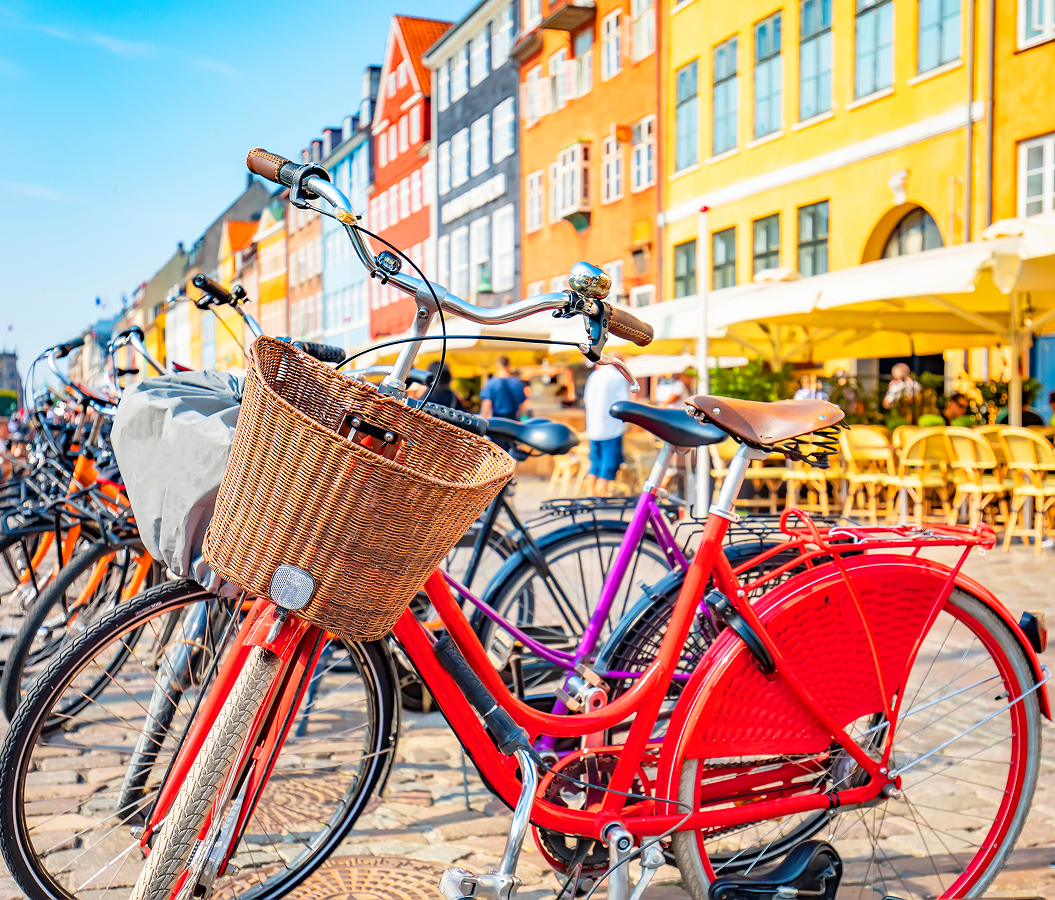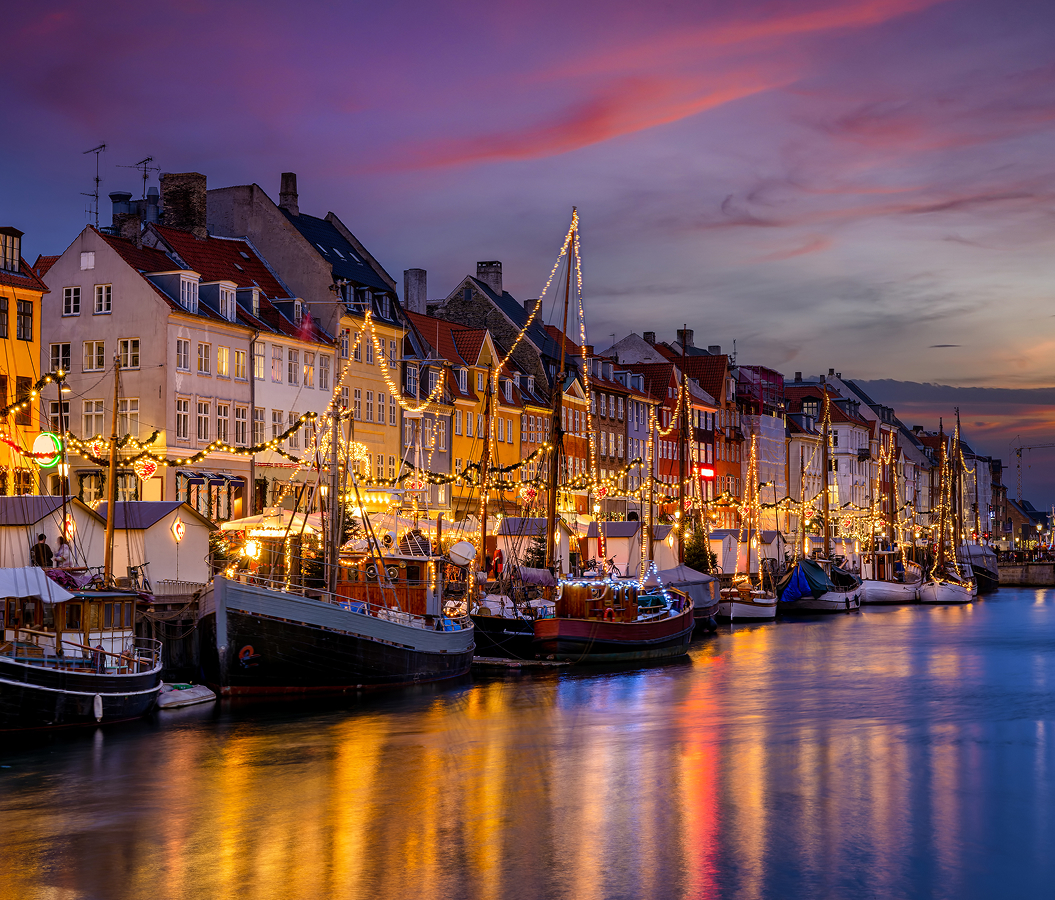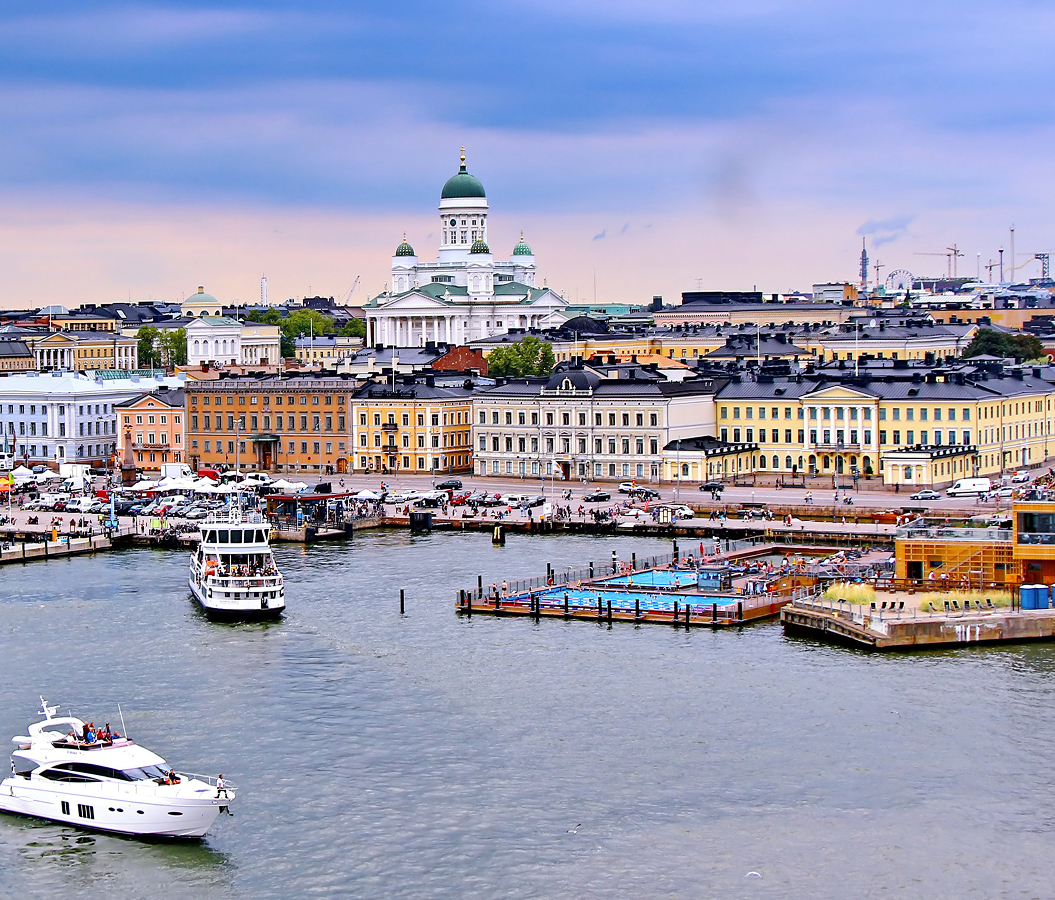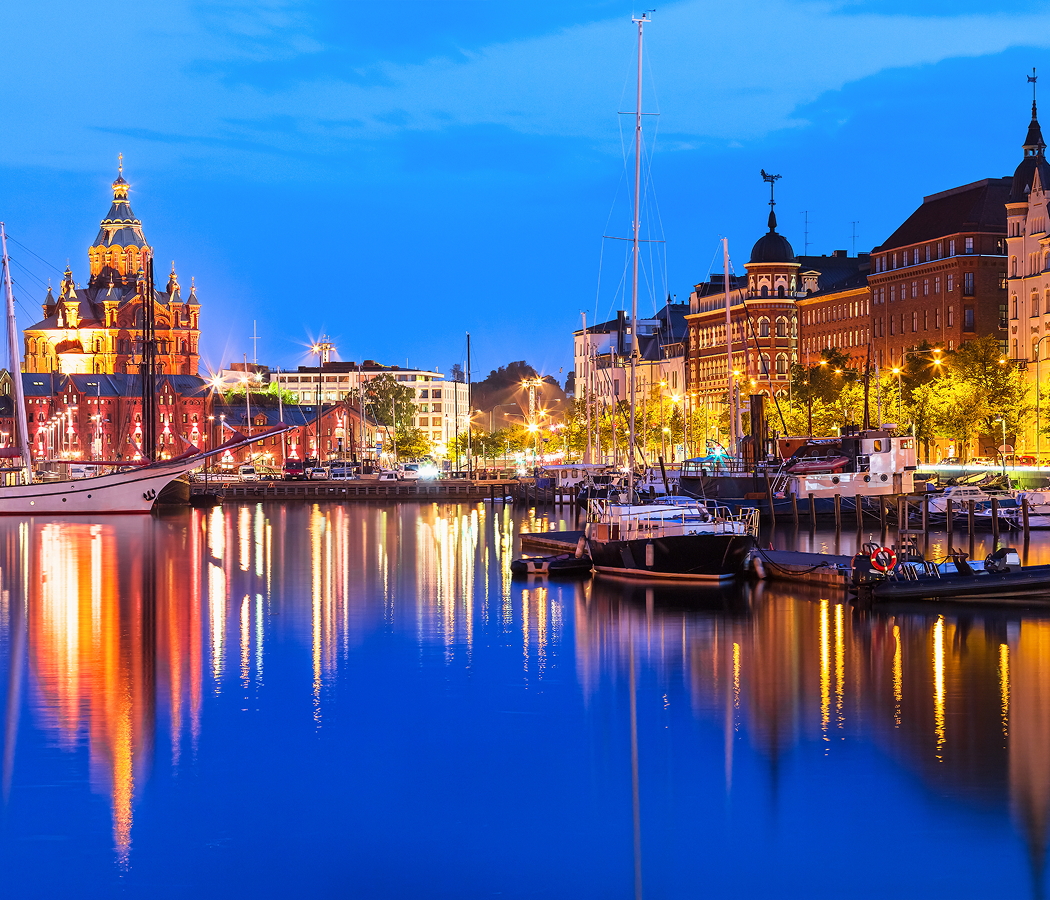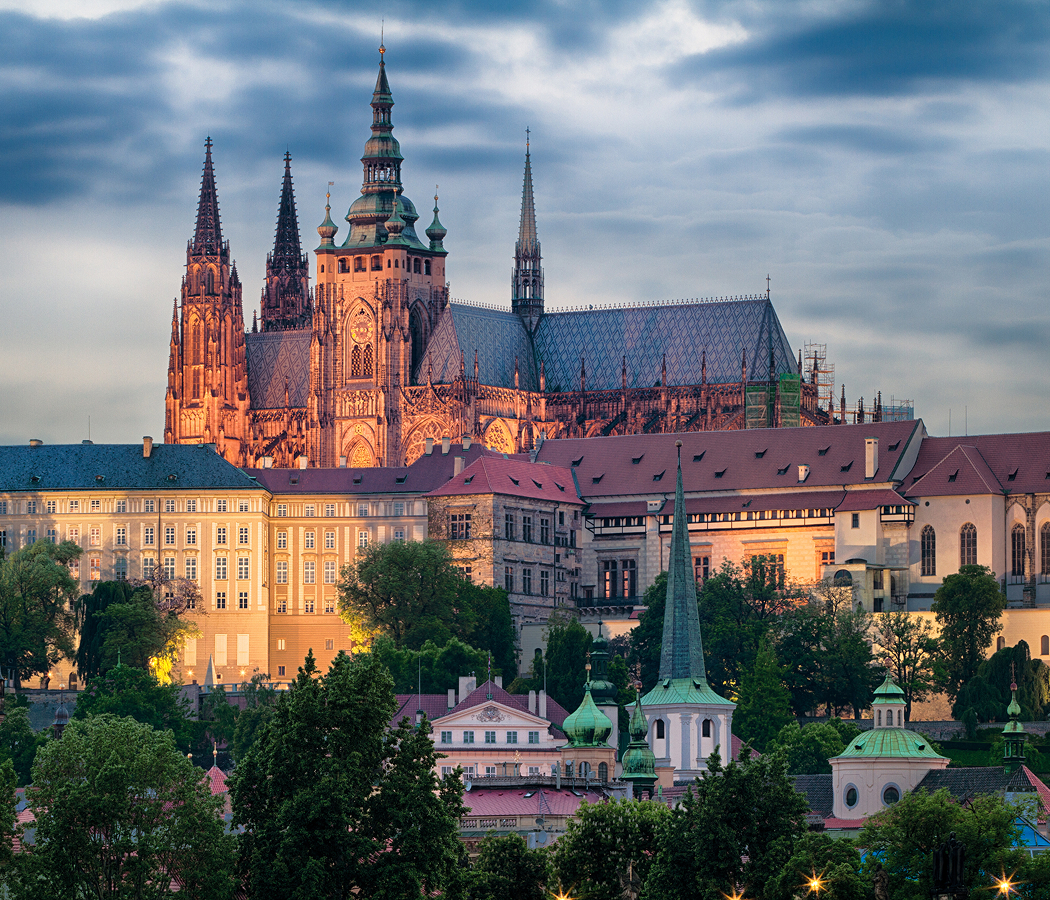
Why you should experience Nyhavn in Copenhagen.
Nyhavn in Copenhagen is where the city’s soul sparkles brightest, a kaleidoscope of color, culture, and calm set along the edge of the water.
Lined with candy-colored 17th- and 18th-century townhouses, wooden sailing ships, and lively cafés, this harbor district embodies everything people dream of when they picture Copenhagen: warmth, creativity, and a touch of poetic nostalgia. Originally dug as a commercial port in the 1670s, Nyhavn was once the bustling heart of trade and seafaring life, filled with sailors, storytellers, and song. Today, it hums with a softer rhythm, one of laughter, clinking glasses, and music drifting from accordion players on the promenade. The pastel façades reflect in the canal like watercolor, especially in the golden hour light, when the entire quay glows with a painter’s serenity. Every building here tells a story: Number 9 is the oldest, dating to 1681; Number 20 once belonged to Hans Christian Andersen, who wrote many of his beloved fairy tales while living along this waterfront. Few places on earth capture the spirit of a city so completely, Nyhavn isn’t just a neighborhood; it’s Copenhagen’s open invitation to slow down and savor life by the sea.
What you didn’t know about Nyhavn.
Beneath its postcard-perfect charm, Nyhavn carries centuries of history, a layered evolution from sailors’ quarter to global symbol of Scandinavian joy.
The canal was originally commissioned by King Christian V as a gateway from the sea to the city’s inner markets, dug by Swedish prisoners of war following Denmark’s conflicts in the late 17th century. For more than two centuries, the harbor was a rowdy hub of merchants, fishermen, and taverns, a place where rum flowed freely and the air was thick with salt, smoke, and stories. In the 19th century, as industrial shipping moved elsewhere, the area began to fade into disrepair, its timber boats rotting and its houses decaying. Then came one of Copenhagen’s most remarkable revivals. In the 1960s and ’70s, a massive restoration effort began, blending preservation with renewal, restoring façades to their original hues while transforming warehouses into cafés, galleries, and homes. In 1980, Nyhavn was closed to car traffic, creating the pedestrian haven that exists today. The canal itself was filled with life once again, old sailing ships were invited back as part of the Nyhavn Veteran Ship and Museum Harbor, turning the quay into a floating museum of maritime history. Few realize that the vivid color palette wasn’t random; each house was painted to help sailors identify their lodgings from afar after long voyages. Nyhavn’s beauty, then, isn’t cosmetic, it’s born from purpose, resilience, and an unwavering love for the sea.
How to fold Nyhavn into your trip.
Experiencing Nyhavn in Copenhagen is best done with time to linger, to let its rhythm slow yours and its light paint your memories.
Start your visit early in the morning before the crowds arrive, when the canal still mirrors the pastel buildings and the air smells faintly of coffee and sea salt. Wander along the cobblestone promenade, pausing at Andersen’s former homes to imagine the fairytales they inspired, or step onto one of the canal cruises that depart from Nyhavn’s edge, a scenic voyage that glides past Copenhagen’s landmarks like the Opera House, the Little Mermaid, and Amalienborg Palace. Around midday, find a table at one of the harbor’s historic restaurants, perhaps a plate of smørrebrød and a local Carlsberg, and watch as life unfolds like a slow ballet of bicycles, street performers, and the gentle creak of ships in the breeze. For photography, the best light comes at sunset, when the sun dips behind the buildings and the harbor ignites in gold and crimson reflections. At night, Nyhavn transforms again, strings of lanterns flicker above diners, the laughter of locals mixes with the murmur of the canal, and the city’s famous hygge, that uniquely Danish sense of contentment, settles like a warm blanket. If you walk its full length to the end, where the canal meets the sea, take a moment to turn back: what you’ll see isn’t just a postcard, but a living portrait of Copenhagen, timeless, joyful, and quietly unforgettable.
Hear it from the Foresyte community.
Daytime is all families and ice cream cones, nighttime is too many shots and music spilling from bars. Either way you it’s a great place to stay longer than you planned.
Where meaningful travel begins.
Start your journey with Foresyte, where the planning is part of the magic.
Discover the experiences that matter most.


